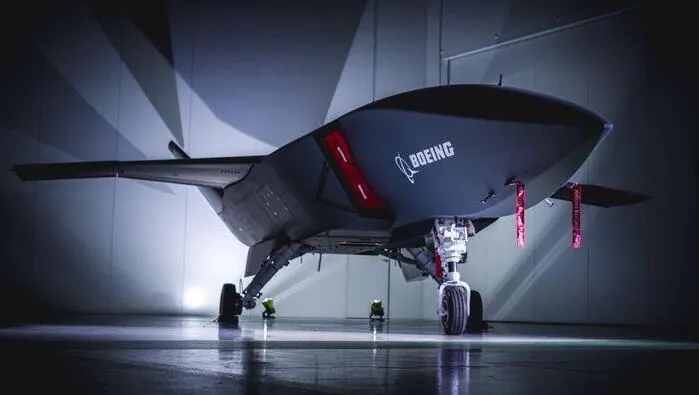
Boeing's Starliner Returns Amid Uncertainties, While India Sets Its Sights on Lunar Exploration
2025-04-03
Author: Jia
Boeing’s Starliner Faces Challenges as NASA's Certification Awaits
In a significant turn of events for space missions, the astronauts who experienced an extended stay aboard the International Space Station (ISS) have returned safely to Earth as of March 18. Sunita Williams and Barry Wilmore, alongside their crewmates Nick Hague and Russian cosmonaut Alexander Gorbunov, returned aboard SpaceX's Dragon spacecraft Freedom after an extensive 17-hour journey from the ISS.
Originally, Williams and Wilmore were part of Boeing’s Starliner spacecraft crew during its inaugural crewed test flight in June 2024. However, complications arose, including helium leaks from critical thrusters, prompting NASA to cancel their return aboard Starliner. Instead, the spacecraft made an autonomous landing in September 2024, a decision born from the need to address ongoing malfunctions.
As the crew adjusted to life aboard the ISS, their stay extended from an anticipated eight days to a remarkable nine months. The uncertainty surrounding the Starliner now looms large. The program, beset by financial losses for Boeing, may require another test flight before it can receive NASA certification, with further questions about whether the next mission will feature a crew.
The issues stem from recurring helium leaks in Starliner's thrusters—48 of which are installed on each craft, performing both substantial trajectory adjustments and fine-tuning for maneuvers like docking. During the ISS mission, five thrusters failed—though four were restored thanks to collaborative efforts. However, the root cause, potentially linked to valve overheating, remains unclear.
Steve Stich, manager of NASA’s Commercial Crew Program, expressed confidence in Boeing's future but emphasized the need for rigorous testing in the summer, asserting that the upcoming Starliner flight must be prepared for possible crewed missions. "We need Boeing as a part of our crew transport rotation," he remarked, highlighting the dual-spacecraft system importance for redundancy in future human spaceflight endeavors.
Firefly Aerospace Celebrates Lunar Land Success, Paving the Way for Future Missions
Meanwhile, in a noteworthy achievement for private space enterprises, Firefly Aerospace's lunar lander, Blue Ghost, has completed a successful mission, marking a historic milestone as the first privately operated spacecraft to land smoothly on the Moon. After operating for an impressive 346 hours (about 14.5 Earth days), Blue Ghost shared its final transmission, demonstrating its functionality by even capturing rare footage of a lunar sunset after temperatures plunged as the sun set below the horizon.
Throughout its mission, Blue Ghost transmitted an astonishing 119 gigabytes of data, with half derived from scientific instruments assessing lunar dust and other phenomena. Firefly Aerospace's CEO, Jason Kim, celebrated the achievements, which included groundbreaking advancements in lunar GPS tracking and subsurface drilling techniques.
With two additional Firefly lander missions planned, Blue Ghost 2 is set to explore the Moon's far side next year, while Blue Ghost 3 will return to the near side with a small rover in 2028.
ISRO's Ambitious Lunar Objectives with Chandrayaan-5
Turning to India, the Indian Space Research Organisation (ISRO) has received the green light for its ambitious Chandrayaan-5 mission. In collaboration with Japan, ISRO plans to deploy a substantial 250-kilogram rover near the Moon's south pole, boasting advanced scientific instruments designed to probe for frozen water beneath the surface.
With the mission anticipated for no earlier than 2028, it signals India's continued commitment to lunar exploration following its previous successes in landing on the Moon through the Chandrayaan-3 mission. The country has also outlined plans for subsequent missions, including Chandrayaan-4, which aims to return lunar soil samples post-2027.
In tandem with its lunar exploration initiative, India is developing the Gaganyaan program, with aspirations of launching crewed missions by 2026. This program will eventually enable Indian spacecraft to dock with the ISS, marking a significant leap towards international collaboration in space.
Revolutionary Discoveries and Competitive Spirit in Space Exploration
In an astonishing discovery, new observations from the James Webb Space Telescope (JWST) and the ALMA radio telescope have revealed unprecedented insights into the evolution of the universe. The detection of oxygen in the galaxy JADES-GS-z14-0 has forced scientists to rethink current models of galaxy formation, suggesting rapid development in the early universe, merely 300 million years post-Big Bang.
Moreover, on a lighter note, SpaceX’s CEO Elon Musk has introduced a Mars-themed challenge tied to the NCAA March Madness basketball tournament. Participants must predict winners of all tournament games for a chance to win a future trip to Mars. Although the odds of success are exceedingly slim, with previous records showing one participant correctly guessing only 49 games, it highlights the ongoing intersection of sports and outer space ventures.
With all these developments, the race for space continues to accelerate, with Boeing, Firefly, ISRO, and SpaceX each playing critical roles in laying the foundation for humanity’s future in space exploration and beyond.


 Brasil (PT)
Brasil (PT)
 Canada (EN)
Canada (EN)
 Chile (ES)
Chile (ES)
 Česko (CS)
Česko (CS)
 대한민국 (KO)
대한민국 (KO)
 España (ES)
España (ES)
 France (FR)
France (FR)
 Hong Kong (EN)
Hong Kong (EN)
 Italia (IT)
Italia (IT)
 日本 (JA)
日本 (JA)
 Magyarország (HU)
Magyarország (HU)
 Norge (NO)
Norge (NO)
 Polska (PL)
Polska (PL)
 Schweiz (DE)
Schweiz (DE)
 Singapore (EN)
Singapore (EN)
 Sverige (SV)
Sverige (SV)
 Suomi (FI)
Suomi (FI)
 Türkiye (TR)
Türkiye (TR)
 الإمارات العربية المتحدة (AR)
الإمارات العربية المتحدة (AR)